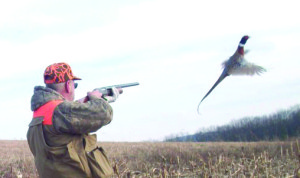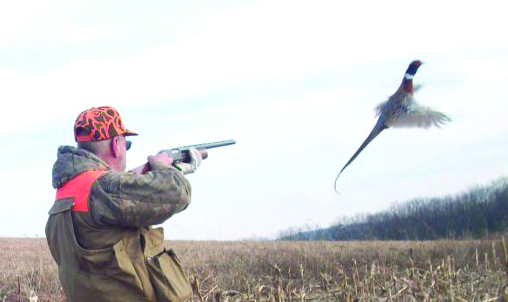A 7-letter key to successful small-game hunting

Washing the house the other day, it was hard to ignore the cluster of spider webs slung around the corner of our patio near a pair of spotlights that shine into the backyard.
That was because each was filled with a variety of trapped insects waiting — paralyzed — for the inevitable hungry spider to eventually crawl its way down for a snack.
We small-game hunters can learn a thing or two from the spider — one of nature’s most proficient hunting machines.
You can ask two dozen veteran hunters what the secret to success is during small-game season, and easily get 20 different answers.
It’s all in the gauge of the shotgun you’re using, they’d say. Or the size of the shot in your shells or the grain of powder used to propel the little lead BBs toward the unsuspecting pheasant or squirrel.
It’s about using a well-trained dog, some suggest. About scouting for signs, choke size, positioning in the field or after-shot follow-through.
And while all those elements — and many others — can contribute to a better hunting experience, perhaps our best advice comes from the spider. More specifically from its web and where it is located.
Growing up on a small pheasant game farm/hunting preserve outside of McEwensville, my brother and I had the privilege of learning everything about game species. Locally, pheasants once were everywhere and people used to flock to our region because of its ample pheasant population.
There are numerous theories on what happened to the pheasant — from a sharp rise in predators to changes in farming practice. But at the core of that decline was the change in habitat.
That seven-letter word is the key to successful hunting. With proper habitat, small game species have enough cover to elude the coyotes, hawks, foxes owls and other predators lurking in the outdoors. Proper habitat offers a smorgasbord of food, water and other necessities.
On our game farm, which eventually fell within the Wild Pheasant Restoration program region of rural Turbotville, habitat was emphasized above all else. Certain stretches were left to grow to provide thick cover. Other patches were seeded with milo, sorghum and other pheasant-friendly food sources. A small stream wound its way through the center of our “gulley field” where much of the hunting action took place.
And our efforts paid off. Not only did the habitat accommodate the pheasants, quail and occasional chukkar we released, but we began to draw in small game from surrounding farms that were more focused on crop production and not wildlife habitat.
In the spring, we’d come across wild pheasant chicks and in the fall we’d run into various coveys of well-fed, well-protected birds.
Our game farm is no longer in operation, but the remnants of our habitat efforts remain. There is a healthy population of various wildlife species, from deer and turkey to small game options.
Unfortunately, quality public hunting grounds can be hard to locate and heavily utilized by other hunters looking for the best possible place to track down a rabbit, dove or other small-game treasure.
We do have the benefit of a few state game lands — one outside of Mifflinburg, another near Selinsgrove and a larger tract of land with quality habitat just outside of Allenwood near the federal prison complex. We also have thousands of acres of prime habitat — and small game opportunities — at the Montour Preserve public hunting lands near Washingtonville.
Like my backyard spotlights drawing in a buffet of insects and ultimately a few wily spiders, the public hunting lands with the best habitat are also best places to successfully come across whatever game species you seek to find.
For those who kick around other less-public places to hunt, remember first and foremost to obtain landowner permission first and foremost. On these local farms, woodlots and other tracts of land, the key is once again to gravitate toward the best habitat.
Wildlife is drawn especially to buffer zones between habitat types. Fencerows between fields of differing crops are one good place to look. Typically this is where rabbits create their burrows and a variety of species will duck in for cover in between feeding or watering runs to adjacent fields.
Some farmers harvest their corn, soybean and other crops later than others, and those that still have crops available later in the season will more likely have wildlife nearby. From an etiquette standpoint, hunters should stay out of unharvested fields unless given permission to walk through them by the landowners.
Another hotspot for hunting includes small patches of woodlands scattered across various farms, especially those near food plots and water sources.

